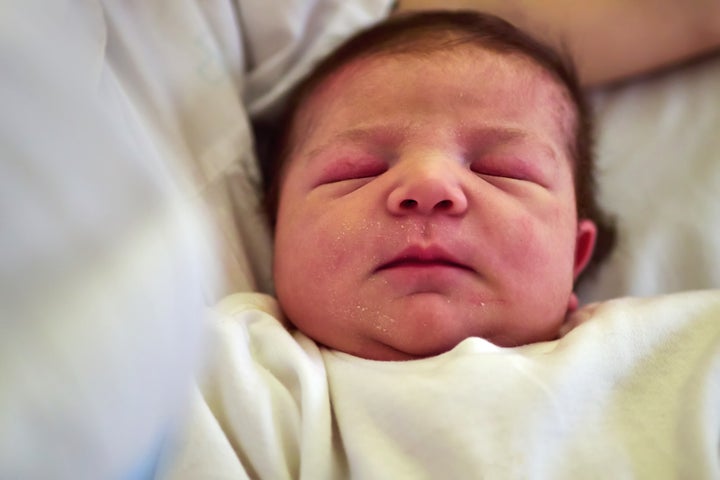
When we think of severe allergies, most of us would probably think of peanuts straight away. But Lydia Collins-Hussey, a specialist paediatric allergy dietitian, is here to tell you that a milk allergy can be just as bad.
“Peanut has this reputation for being the ‘worst’ allergen when in fact any food can cause a severe reaction,” she says.
What may come as a surprise is that research has shown more severe reactions amongst children in the UK are from milk.
“Milk is often regarded as a mild allergy when in fact reactions can be just as severe as peanut, egg, sesame, and any other food,” she says.
Hannah Whittaker, an expert in cow’s milk allergy and pregnancy dietitian, will often speak to mums who say they feel like no-one is listening or taking them seriously when they say their child is experiencing issues related to cow’s milk.
“This is not OK, and mums deserve the knowledge to empower them,” she says. So what do you need to know?
What is cow’s milk allergy?
Cow’s milk allergy – sometimes referred to as cow’s milk protein allergy (CMPA) – occurs when the body recognises the proteins in milk as a possible threat.
According to Allergy UK, this can cause the immune system to be sensitised – so when cow’s milk is consumed again, the body reacts to it and displays symptoms of an allergy.
Milk allergy is one of the most common food allergies to affect babies and young kids. And can appear in one of two ways – immediate or delayed.
Symptoms that are quick to appear – we’re talking within an hour or two – are caused by the immunoglobulin E antibody (called IgE). This type of reaction is called IgE mediated food allergy.
The other type of milk allergy happens when symptoms are delayed – meaning they can appear anywhere between two and 72 hours later. This type of reaction is called non-IgE mediated food allergy and is the more common of the two.
It’s expected that most children with a non IgE-mediated allergy to cow’s milk will outgrow this by secondary school age.
What are the signs of cow’s milk allergy?
- skin reactions – such as an itchy rash or swelling of the lips, face and around the eyes
- digestive problems – such as stomach ache, vomiting, colic, diarrhoea or constipation. It’s worth noting in babies, their poo might become loose, mucousy, or blood-tinged.
- hay fever-like symptoms – such as a runny or blocked nose
- eczema that does not improve with treatment
In some cases the allergy can be severe and cause swelling in the mouth or throat, wheezing, cough, shortness of breath, and difficult, noisy breathing. If they experience this, call 999 right away – even if symptoms seem to get better.

How does an allergy differ to an intolerance?
Lactose intolerance is where the body is intolerant to the sugar lactose within cow’s milk, whereas a cow’s milk allergy is an allergy or intolerance to the proteins in cow’s milk, according to Leeds Children’s Hospital.
Lactose intolerance – which is actually quite rare in little ones – can only cause delayed symptoms, whereas cow’s milk allergy can cause either immediate and/or delayed symptoms.
Common signs of lactose intolerance include: diarrhoea; gassiness; tummy pain, discomfort or bloating; a gurgling stomach and, in some instances, baby not gaining weight.
If your baby shows signs of milk allergy, what can you do?
If their reaction is severe, you need to seek urgent help. However if the reaction is mild or moderate, you should speak to your GP, who may then refer you to a specialist.
Whittaker says there are some things you might want to consider thinking about before your appointment – and also flagging with your GP or specialist. These include:
Is there a family history of food allergy, eczema or asthma?
Check their poo, take pictures, bring their dirty nappies to the clinic to show the symptoms to your health professional. Is there blood or mucous present? Is it runny, solid or a strange colour?
Monitor how soon the reaction starts after having milk – is it straight after a milk feed or a little later (delayed)? How soon do symptoms take to settle? Do they go within an hour? Do they get progressively worse? Are they losing weight?
How is their skin after the reaction? Is it mottled? Do they look like hives? Does the rash stay in one place or spread? How long does it take to go?
Does your baby get snuffly after feeding or do they get a runny nose or repeated conjunctivitis? Do they cough and are you concerned they may have difficulty breathing? In the latter instance, babies should be taken immediately to A&E.